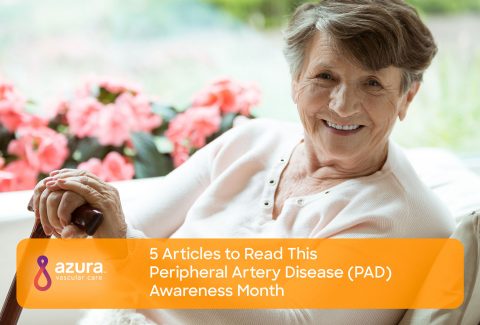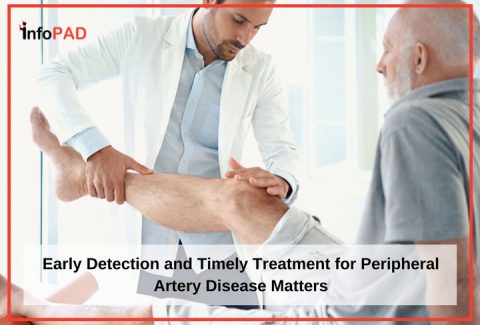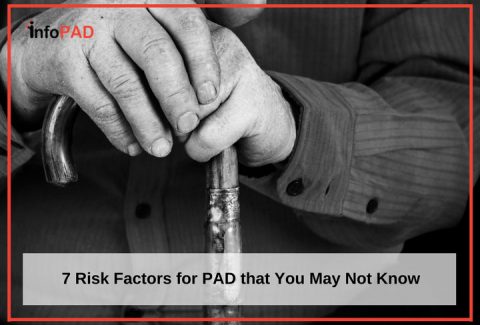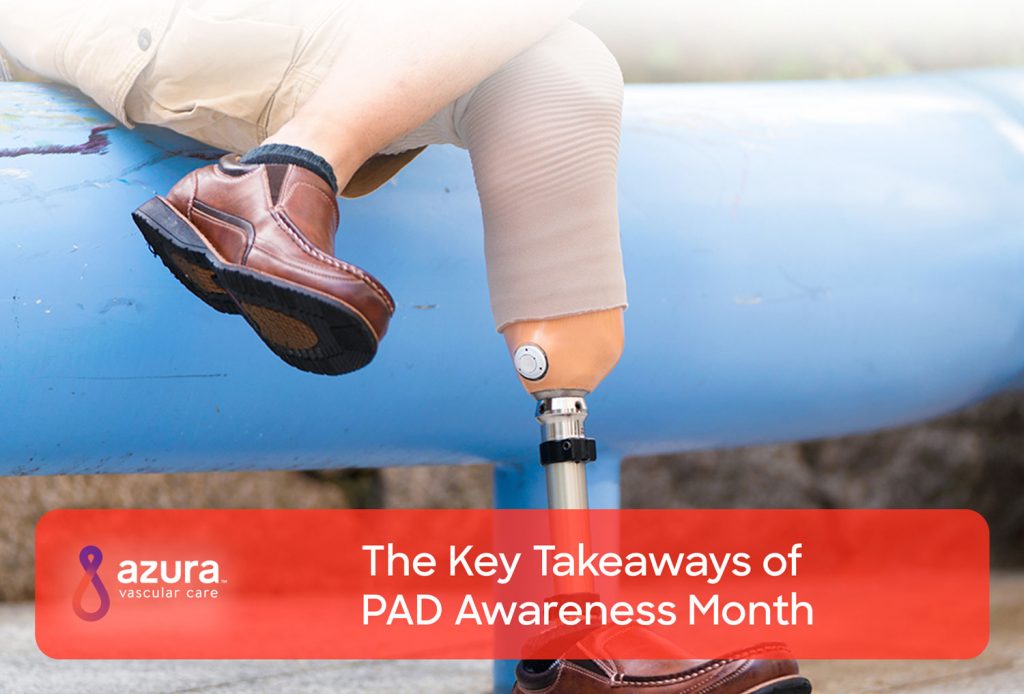
The month of September is widely recognized as PAD awareness month, a national campaign led by the CardioVascular Coalition that aims to spread awareness of Peripheral Artery Disease (PAD), a progressive, life-threatening vascular disease affecting 8-12 million Americans. Unfortunately, many people are not aware of PAD or they attribute their symptoms to being nothing more than a normal part of getting older. Even if you don’t have any symptoms of peripheral artery disease, you may need to be screened if you are:
- Over age 65
- Over age 50 and have a history of diabetes or smoking
- Under age 50 but have diabetes and other peripheral artery disease risk factors, such as obesity or high blood pressure.
PAD is caused by atherosclerosis—the accumulation of plaque inside arteries—the very same cause of most heart attacks and strokes. When plaque limits blood flow to the limbs, it can cause a variety of problems, such as leg pain when walking. In its most severe stage, PAD can lead to foot or leg amputation, and possibly death.
As PAD awareness month comes to an end, let’s keep spreading the word. It is important to reflect on your health and take these 5 steps to lower your risk of amputation due to PAD:
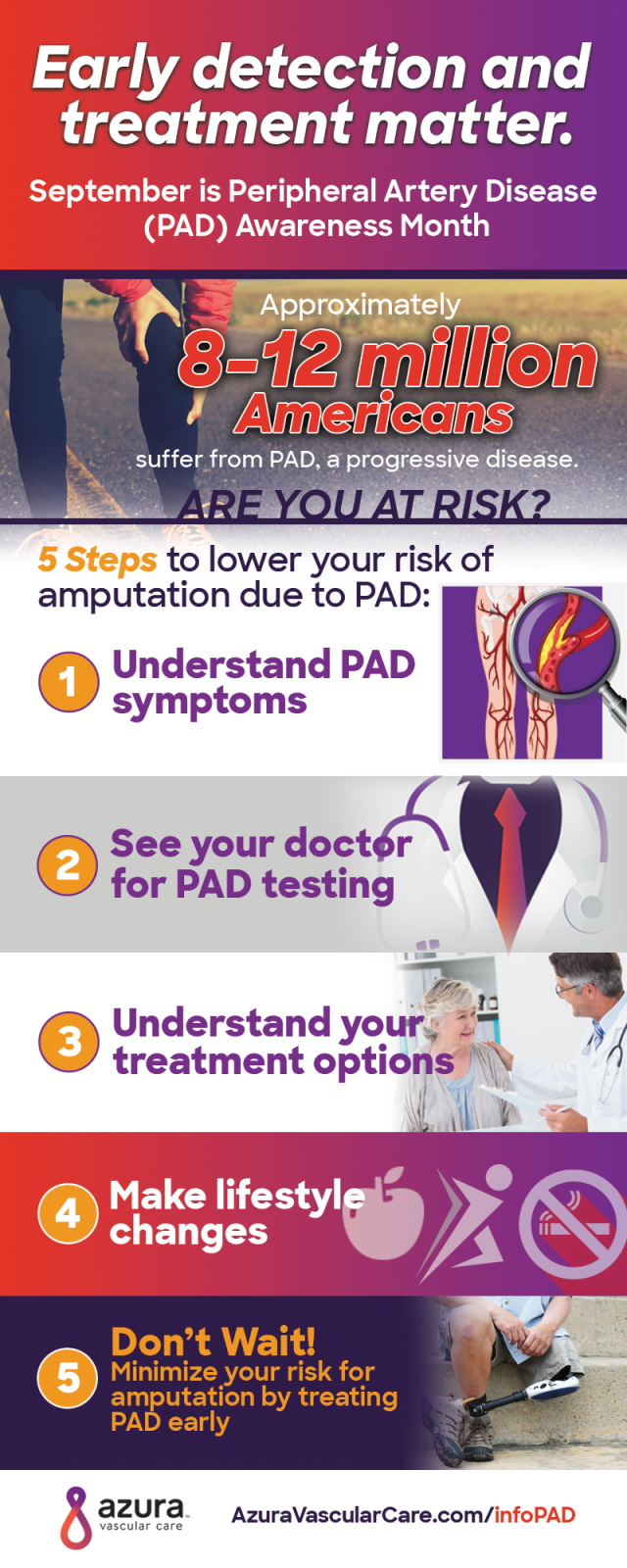
1. See your doctor for PAD testing
Are you experiencing a feeling of heaviness in your legs, mild or severe leg pain while walking or climbing stairs, or sores on your legs or feet that won’t heal? You may be suffering from peripheral artery disease. Timely detection is critical. Take charge of your health and make an appointment with a PAD specialist today.
2. Understand your treatment options
Have you recently been diagnosed with PAD? We urge you to explore the four most common treatment options which include lifestyle changes, taking prescription medications, minimally invasive procedures such as angioplasty, stenting and atherectomy, and traditional surgical procedures. Learning about treatment options for PAD will prepare you for an informative conversation with your health care provider regarding the best treatment plan for you.
3. Understand PAD symptoms
It is important to understand PAD symptoms because if you know the warning signs, you’ll be able to seek treatment early. Many individuals may not experience highly notable PAD symptoms, or they assume that their leg pain and symptoms are associated with the aging process. Reporting symptoms to your doctor is highly important because PAD increases your risk of heart disease, heart attack and stroke. Common PAD symptoms include, but are not limited to painful cramping of the legs or thighs that often occur when walking or climbing steps, non-healing ulcers or sores on your feet or legs, leg numbness or weakness, and cold lower legs or feet.
4. Make lifestyle changes
Prevention is still the best medicine. Lifestyle changes which address the four common PAD risk factors, such as—smoking, diabetes, blood pressure control and cholesterol—is a great place to start. If you are a smoker, consult your doctor regarding options to help you kick the habit. Know your numbers! Keep blood pressure, cholesterol and blood sugar under control to prevent PAD, or possibly slow the progression of this disease.
Exercising regularly and eating a healthy diet are also very important lifestyle changes in the fight against PAD. Ample exercise enables your muscles to function more efficiently and can ease symptoms. Additionally, a healthy diet can help lower blood cholesterol levels and positively influence a PAD patient’s quality of life.
5. Don’t wait!
Early detection and timely treatment for Peripheral Artery Disease matter. If you are experiencing symptoms associated with PAD, don’t hesitate to contact your health care provider. If left undiagnosed and untreated, this progressive vascular condition can lead to amputation, so we urge you to educate yourself and seek treatment early.
In support of PAD awareness month, Azura Vascular Care invites you to learn more about this progressive disease that affects one in twenty Americans over age 50. We encourage you to evaluate your personal risk for PAD by taking the Peripheral Artery Disease Risk Assessment if you have not done so already. Remember – early detection and treatment matter.
